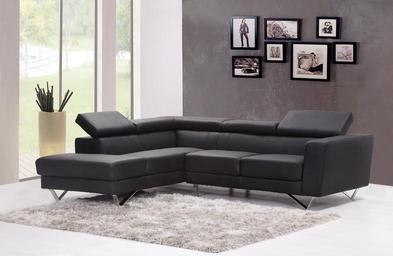Introduction
In the realm of artistic expression, the self-portrait holds a unique and profound significance. Traditionally, self-portraits have been an exploration of identity, emotion, and the human experience. However, as contemporary artists seek new avenues for expression, the faceless self-portrait emerges as a captivating alternative. This article delves into how faceless self-portraits can enhance artistic exploration, offering insights into aesthetic self-portrait photography, contemplative photography, and more.
What Are Faceless Self Portraits?
Faceless self-portraits are visual representations where the artist deliberately omits or obscures their face. This technique invites viewers to focus on other aspects of the artwork—be it body language, clothing, or surroundings. It creates an air of mystery and encourages contemplation about identity and existence.
The Evolution of Self-Portraiture
Self-portraiture has evolved significantly over centuries. From classical paintings to modern digital photography, artists have used this medium to express personal narratives. The introduction of faceless elements marks a shift toward abstraction and conceptual thinking in art.
Understanding Aesthetic Self Portrait Photography
Aesthetic self-portrait photography focuses on creating visually pleasing images that evoke emotions or provoke thought. By employing various techniques such as lighting, composition, and post-processing, photographers can transform ordinary scenes into captivating works of art.

The Role of Emotion in Aesthetic Photos
Emotion is central to aesthetic photos. Through careful selection of color palettes and framing techniques, photographers can convey feelings ranging from joy to melancholy. Faceless self-portraits often amplify these emotions by removing facial expressions that might otherwise dictate viewer interpretation.
How Faceless Self Portraits Can Enhance Artistic Exploration
Faceless self-portraits serve as a canvas for deeper artistic exploration by allowing artists to:
Focus on Composition: Without a face to direct attention towards, artists can experiment with various compositional techniques. Encourage Interpretation: Viewers are invited to project their thoughts onto the piece since there’s no singular narrative dictated by a visible face. Explore Identity: Omitting facial features prompts questions about identity—what defines us beyond our physical appearance? Utilize Symbolism: Artists can use clothing or props symbolically to represent different aspects of themselves or societal roles. Create Contemplative Spaces: These artworks foster environments conducive to reflection and introspection.Contemplative Photography Explained
What is contemplative photography? It is an approach that emphasizes mindfulness and awareness in capturing images. Instead of merely snapping pictures for documentation or aesthetics, contemplative photographers engage deeply with their subjects—be it nature or urban landscapes—to evoke a sense of presence.
How Contemplative Photography Relates to Faceless Self-Portraits
Contemplative photography aligns seamlessly with faceless self-portraits as both invite viewers into a space for introspection. By focusing on elements beyond the face—like hands gesturing or silhouettes against backdrops—artists encourage deeper engagement with their work.
Techniques for Creating Faceless Self Portraits
Faceless self-portraiture involves specific techniques that enhance visual storytelling:
1. Creative Use of Shadows
Shadows can add depth and intrigue to your work while obscuring your identity.
2. Strategic Framing
Experimenting with angles can help emphasize certain body parts while keeping your face hidden.
3. Symbolic Props
Using items like masks or hats adds layers of meaning regarding identity and persona.

4. Abstract Perspectives
Incorporating abstract elements transforms a simple portrait into an enigmatic piece that challenges perception.
Aesthetic Colorful Portrait Photography Techniques
Beyond being just faceless, these portraits can be visually stunning through vibrant colors. Techniques such as color grading during post-processing play crucial roles in achieving this goal.
Incorporating Rare Home Interior Pictures in Faceless Self Portraits
Rare home interior pictures can serve as fascinating backdrops for faceless portraits:
They provide context about the artist's life. Unique interiors reflect personal taste. They enable storytelling through environment rather than face.The Intersection of Art Photography and Faceless Portraiture
Art photography elevates faceless portraits by blending technical skill with emotional depth:

1. Fine Art Photography Techniques
Fine art photographers utilize advanced camera settings alongside artistic vision to create compelling pieces that resonate with audiences emotionally and intellectually.
2. Abstract Self Portrait Photography
Abstract approaches allow artists freedom from realism while still conveying powerful messages through form and color dynamics.
Why Do Many Contemporary Printmakers Prefer Linocut to Woodblock Printing?
Many contemporary printmakers gravitate toward linocut due to its versatility—it allows greater freedom when carving intricate designs compared with traditional woodblock methods which may limit creativity due to harder materials involved in carving processes.
Faceless Self Portrait Ideas for Artistic Exploration
Here are some inspiring ideas you might consider when creating your own faceless self-portrait:
Use reflections in mirrors or windows Capture movement through long exposures Employ double exposure effects Showcase hands interacting with objects Incorporate nature through silhouettesAesthetic Photos Wall Inspiration
Creating an aesthetic photo wall featuring your faceless portraits fosters an engaging atmosphere within living spaces:
Choose complementary frames. Mix textures between prints (canvas vs paper). 3 .Arrange asymmetrically for modern flair.FAQ Section
What is contemplative photography?
Contemplative photography involves capturing images mindfully while fostering awareness toward one’s surroundings—encouraging deeper connections between viewers and subjects captured within the frame.
How do I create aesthetic colorful portrait photography?
To produce aesthetic colorful portrait photographs:
- Use vibrant backgrounds, Experiment with colored gels, Set up creative lighting arrangements.
What makes a good portrait photo?
Characteristics include:
- Strong composition, Clear subject focus, Effective use of light.
How do I hang a large canvas?
To properly hang large canvases: 1) Measure wall space accurately. 2) Use appropriate hardware based on weight. 3) Ensure level placement before securing permanently.
Why are faceless self portraits significant?
They encourage exploration beyond physical appearance; they prompt viewers’ interpretations based solely on context rather than facial recognition alone.
How does abstract self portrait photography differ from traditional forms?
Abstract forms prioritize shape & emotion instead realism; they invite various interpretations compared conventional styles focusing primarily likenesses.
Conclusion
In summary, exploring faceless self-portraits unlocks new levels of creativity while challenging perceptions around identity representation within art forms like aesthetic photos wall displays or fine art photography itself! Embrace this artistic journey; let it inspire profound insights into who you are beyond mere appearances! As we’ve discussed throughout this article titled “How Faceless https://explorenow445.hpage.com/post1.html Self Portraits Can Enhance Artistic Exploration,” stepping away from traditional portrayals invites meaningful dialogue surrounding individuality rooted deeply within every creation produced along these lines!